How to Attract Owls to Nest in Your Backyard
Updated: Aug. 24, 2023
Where do owls live? Welcome these nighttime fliers to your yard. Experts reveal how to attract owls and provide shelter in nest boxes.
Our editors and experts handpick every product we feature. We may earn a commission from your purchases.
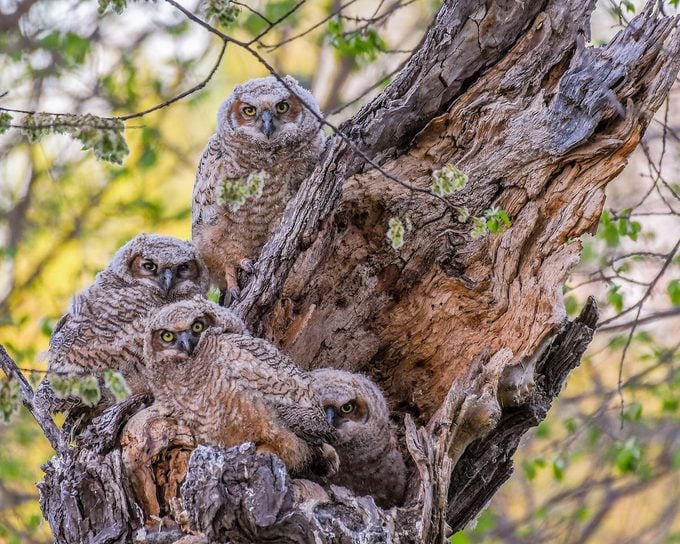
Owls are both popular and mysterious. They’re so obscure, in fact, that most people report they’ve never seen one in real life, let alone a backyard owl. But some types of owls live in suburban neighborhoods, backyards and city parks. Learn more about where owls live and find out how to attract owls to nest and live in your yard by following these expert tips.
Discover 13 fun facts about owls you should know.
1. Attract Owls With Trees and Plants
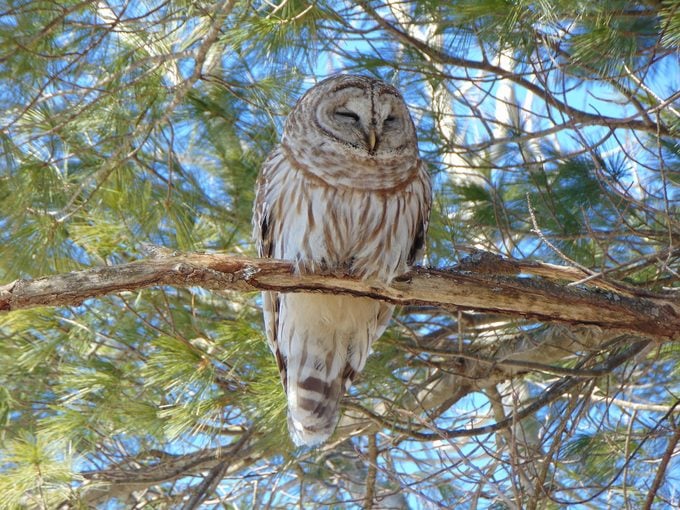
Native plants are the best bet if you want to know how to attract owls. Trees provide nesting places and shelter, and herbaceous plants offer habitat for prey.
Most kinds of owls like to hide inside dense cover during the day and venture out only at night. Evergreen trees provide this kind of shelter year-round. Depending on where you live, ideal choices include pine, spruce or juniper; check with a local native plant nursery to find out which trees grow best in your region. Eventually you may find long-eared owls, northern saw-whet owls, great horned owls or other species nestled away among the branches, sleeping the day away.
Eastern screech-owls are common and widespread east of the Rockies, with western screech-owls replacing them farther west, and both often lurk in towns and cities. However, to nest and raise young, they need cavities such as woodpecker holes or natural hollows in trees. If you can safely leave dead trees or large dead limbs standing, these often have holes that owls use.
Read more: Spot the owl in your backyard trees.
2. Offer Nest Boxes for Cavity-Nesting Owls
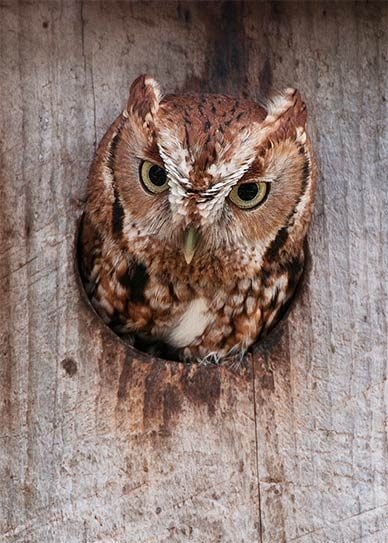
Go a step further and install birdhouses for cavity-nesting species, like screech-owls and barred owls. Screech-owls may use nest boxes designed for wood ducks or American kestrels, with an entrance hole at least 3 inches in diameter. They rest near their nests during the day, so adding a nest box to your backyard gives you a chance to see them more often.
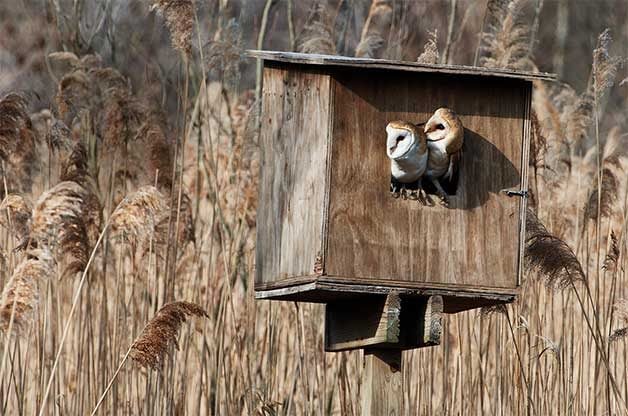
In cooler climates, the Northern saw-whet owl also adopts nest boxes, although it favors a 2-inch entrance hole. Some larger owls also nest in cavities, including barn owls and barred owls.
You can buy pre-made owl nest boxes (bookmark this handy birdhouse hole size chart) or you can also build your own. Check out theraptortrust.org for building plans.
Owl Nesting Box Placement
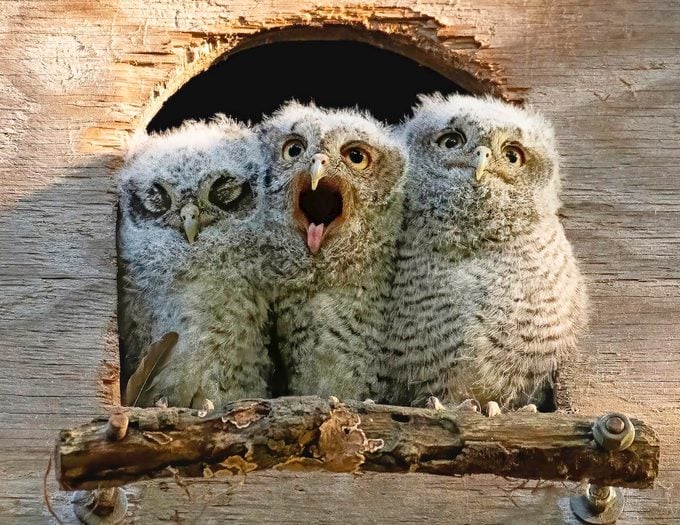
“What is the ideal location and height for an owl box? asks reader Kathy Lorigan of Easton, Pennsylvania.
Birding experts Kenn and Kimberly Kaufman say, “In your area, the owls most likely to move into a nest box are eastern screech owls. They’ll use boxes similar to ones preferred by wood ducks, at least 16 inches deep and with an entrance hole of about 3 inches by 4 inches.
The box should be in a shady spot, and about 10 feet above the ground. Fastening it to the trunk of a large tree may work, but in an area with many predators, it’s best to place it on a tall pole that’s protected with a baffle or predator guard.
Backyard Tip: If you live in farm country, you may be able to place a barn owl box at the edge of open fields or in a barn loft. Barred owls favor dense, swampy woods, and they like nest boxes that are high in trees.
Do owl sightings have special meaning?
4. Say No to Insecticides and Poisons
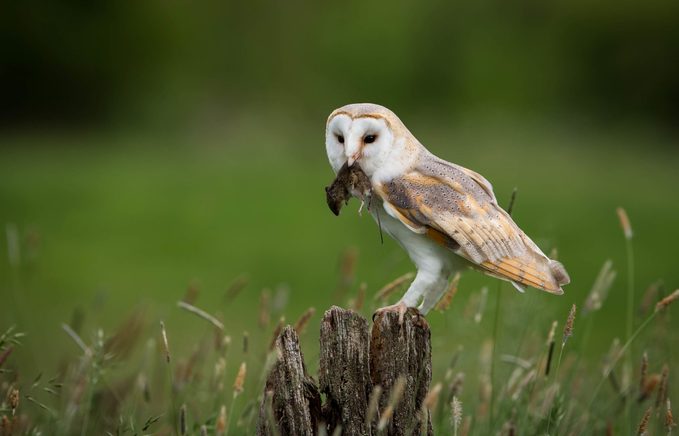
To successfully lure owls to nest, raise babies and make a home on your property, you have to also attract the creatures they hunt. Screech-owls feed on large insects, such as moths and beetles, and small animals such as mice. If you use insecticides or rodenticides around your garden, those poisons may wipe out the prey before the owls find them. Worse, the poisons may be passed along directly to the owls.
Don’t miss these outstanding pictures of owls.
5. Keep Cats Indoors
Even if they’re well-fed, prowling house cats kill many small wild animals. Wiping out populations of mice, voles, lizards and other creatures may not leave enough to support a family of screech-owls or other small owls. On the flip side, a cat that wanders outside at night might become a meal for a large species like a great horned owl. It’s better for everyone to keep house cats inside houses where they belong.
Next, discover fascinating facts about burrowing owls.





















